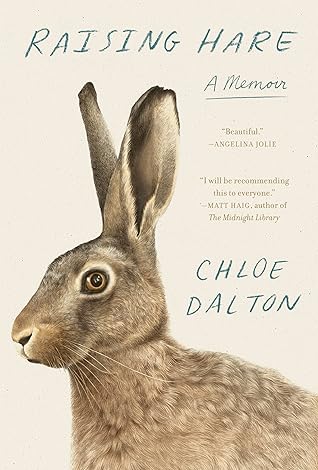More on this book
Community
Kindle Notes & Highlights
The rough grass was rich in buttercups and dandelions, and the leveret amused me with its careful eating habits. Grass it would eat from the tip of the blade down to the stem, flowers the reverse. It would snip dandelions off at the root and gradually draw the stem into its mouth until the vivid yellow petals hovered at its muzzle, whereupon it would neatly sever the flower head and let it fall by its paws.
I wondered how much of the nature of animals is obscured from us simply because of the limitations of our senses and powers of observation.
Elsewhere the hare is described as easily distracted, trembling, highly strung, melancholy and strange.
The clouds hid the stars from sight, including the constellation named Lepus by early astrologers because it lies at the feet of Orion, the celestial hunter. I recalled reading about a Germanic goddess who was said to be accompanied by a train of torch-bearing hares, and thought how handy such a retinue would have been in this moment.
Perhaps the witch-hare’s true magic, I thought, is the wish she inspires, just for a moment, to step out of the human form. To race across the ground with the speed and power of a hare, without tiring; to inhabit its senses and revel in a world of sound, scent and sensation far greater than our own; and to move through the night as effortlessly as if through sunlight.
Perhaps, like Cowper’s hare, she might live to old age if she were kept shut up in the house. But that would be to alter her nature. Instead, she lives the life of the wild hare: hard-pressed, short perhaps, but free.
To domesticate is to alter the nature of an animal in order to fit it into our way of life as humans. For innately wild animals such as the hare, a better way is to coexist.
Whereas before I sought out exceptional experiences and set myself against the crowd, I take comfort in the fact that this process of self-discovery has been felt by millions before me, and that there is nothing original in finding consolation and inspiration in nature. It is
She has taught me patience. And as someone who has made their living through words, she has made me consider the dignity and persuasiveness of silence.
The sensation of wonder she ignited in me continues to burn, showing me that aspects of my life I thought were set in stone are in fact as malleable as wax, and may be shaped or reshaped. She did not change, I did. I have not tamed the hare, but in many ways the hare has stilled me.
I tell myself not to count the years ahead in which she might never again come, but rather cherish the days she has given me of her own free will, when she lowered her species’ instinctive guard against humans, and shared the beauty and mystery of her presence in silent and graceful companionship.
I will remember her leaving, but will know that before she did, she always, first, looked back.


